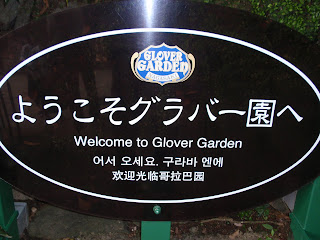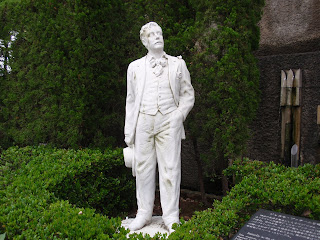Atami City is located in the eastern end of Shizuoka Prefecture which is to the west of Kanagawa Prefecture. So, it takes only 57 minutes from Yokohama Station by the Express Odoriko and 39 minutes from Tokyo Station by the Super Express Hikari.
Atami literally means 'hot ocean', a reference to the town's famous onsen hot springs.
To commemorate the 400th anniversary of Ieyasu's stay in Atami, Atami Onsen Association donated a geyser- an intermittent spring -to Atami City so that Atami visitors can warm their legs and feet.
This geyser is also in front of Atami Station.
To be continued to "A nobel that made Atami famous; A statue of Kan-ichi and O-Miya".
Written and posted by Mitsutoshi Masunari.
Atami literally means 'hot ocean', a reference to the town's famous onsen hot springs.
In front of the station a steam locomotive is being displayed.
This SL was used in the early 20th century to bring tourist to Atami.
In 1604 the first shogun Ieyasu of the Tokugawa Government visited Atami.
In 1662 the fourth shogun Ietsuna ordered to bring barrels which were full of onsen water to Edo Castle.The home delivery service of onsen, so-called 'Onsen purveyor to Tokugawa shogun' peaked at the time of the eighth shogun Yoshimune. From 1726 to 1734, as many as 3,643 barrels were brought to Edo(=Tokyo). It took 15 hours from Atami to Edo Castle. When they arrived in Edo, the hot water tempereture fell to the moderate degree so that the shogun bathed comfortably.To commemorate the 400th anniversary of Ieyasu's stay in Atami, Atami Onsen Association donated a geyser- an intermittent spring -to Atami City so that Atami visitors can warm their legs and feet.
This geyser is also in front of Atami Station.
To be continued to "A nobel that made Atami famous; A statue of Kan-ichi and O-Miya".
Written and posted by Mitsutoshi Masunari.
























































